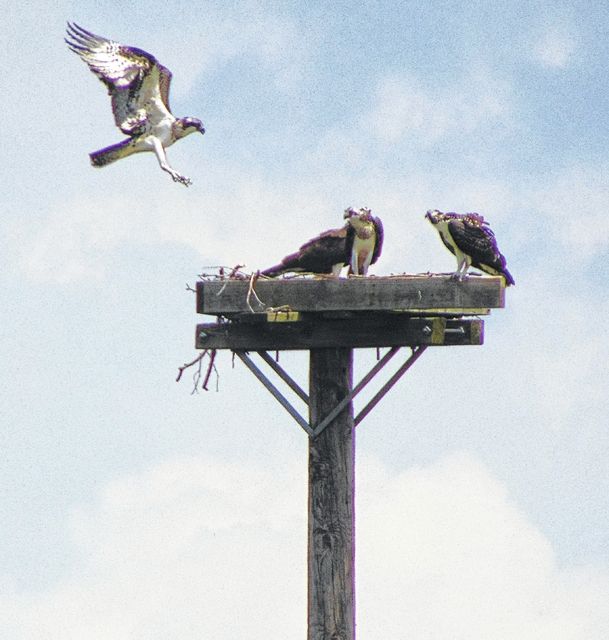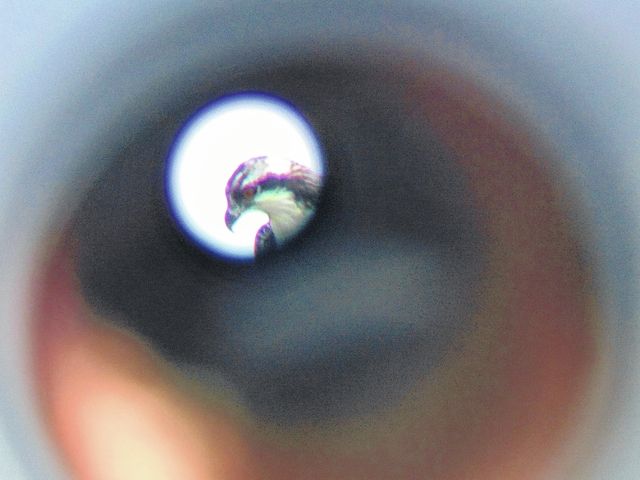Click here to subscribe today or Login.
LONG POND — Doug Gross saw the evidence he was looking for flying above the Wawa store in Blakeslee.
While cars filed in for gas, an osprey secretively flew overhead.
And that was only the start of things to come.
Gross, supervisor of the Pennsylvania Game Commission’s endangered and non-game bird section, recently submitted a new 10-year management plan for osprey in Pennsylvania, and he has high hopes for the raptor that was extirpated from the state in 1982. Prior to that, ospreys were reported in 15 of the state’s 67 counties before the population collapsed from DDT exposure.
Today, the osprey is listed as threatened in Pennsylvania, and Gross thinks that has changed to the point where it can follow the bald eagle off the endangered and threatened species list.
“It’s taken a couple of decades to build up the populations, but they’re reproducing well enough to the point they’re steadily increasing,” Gross said. “We feel they’re past the point where they’re threatened.”
A trip through the Poconos last week seemed to confirm Gross’ belief.
A mammoth nest was constructed on top of a cell tower near Long Pond. Perched alongside were two juvenile and two adult ospreys. It’s one of 25 osprey nests that Gross said can be found around the Poconos, and included in the 115 nests that were found during a statewide survey in 2010.
“There’s probably even more,” Gross said.
The Long Pond nest is significant because it’s near the location where osprey reintroduction efforts began in the early 1980s. Back then, led by East Stroudsburg University professors Dr. Larry Rymon and Charles Schaadt, juvenile ospreys were reared on hacking towers with the hope they would establish populations.
The juvenile ospreys were fed and monitored by East Stroudsburg University students. Bill Williams, information and education coordinator for the PGC’s Northeast Region, was one of those students in the early 1980s. Hacking involves taking young birds out of a several nests and putting them in a man-made nest on a hacking tower, which consists of several telephone poles embedded in the ground with a platform on top.
The hacking process allowed the osprey to expand its range throughout the state.
Williams camped at the hacking towers along Long Pond for days at a time, feeding the young ospreys chunks of carp with a stick, shielded by a partition, so they wouldn’t become imprinted to humans.
“There were three birds in each hacking tower and we’d climb up there three times a day and feed them,” Williams said. “I always hoped to see one fly off, and one day I watched one do just that. It was like the work had come full circle.”
But there was a long wait to see if the work was successful. Williams said when juvenile ospreys leave the nest they migrate to Central America like the adults. Instead of coming back the following year, the juveniles remain in Central America until they are sexually mature, and that can take as long as three years.
“Basically, four years down the road we’d see if they came back. The ospreys were banded and they do return to where they were hatched, but it was a long wait,” Williams said.
The wait was worth it. Ospreys returned to the hacking platforms, reproduced and established population clusters in new areas. The Poconos have always been a stronghold.
In addition to the Long Pond nest, another was found on an old hacking tower in a swamp bordering route I-380 near Gouldsboro. Three juveniles and an adult sat on the platform, un-bothered by the loud traffic that sped by.
“The Poconos are a spectacular place and the ospreys are doing great here,” Gross said. “This reinforces the belief that we’ve brought the osprey back to the point where they’re no longer threatened.”
The Poconos are an osprey stronghold because of the abundance of shallow ponds full of fish. Gross said there are other nests along the Delaware River and Francis E. Walter Reservoir.
In order to upgrade the osprey from threatened status, Gross said it’s still going to take some time. Two more surveys will be conducted – 2016 and 2019, and there needs to be a minimum of 50 nests in the state and 10 nests in each of the four watershed-based population clusters, which include the upper Delaware, lower Delaware, upper Ohio-Beaver, upper and lower Susquehanna.
“This is typical for recovery plans. You’ve reached a peak, but you want to make sure it prevails over time,” Gross said. “You want to see this success continue before you de-list them. But from what I’ve seen here in the Poconos, the osprey is back.”







